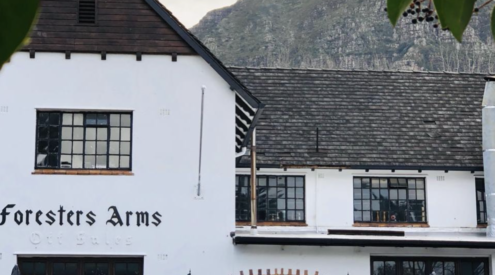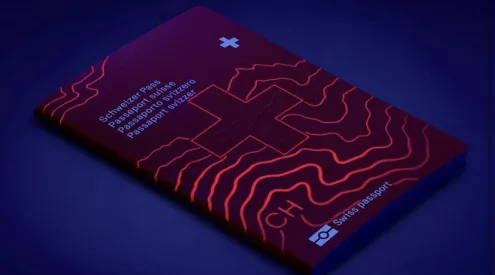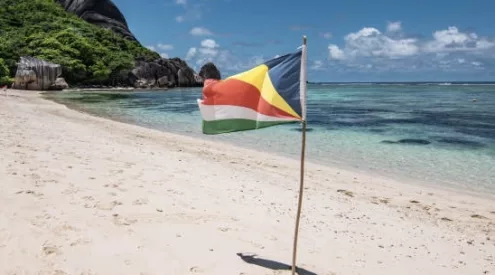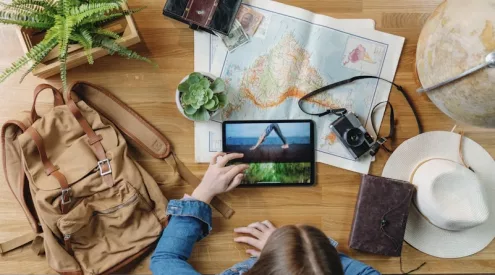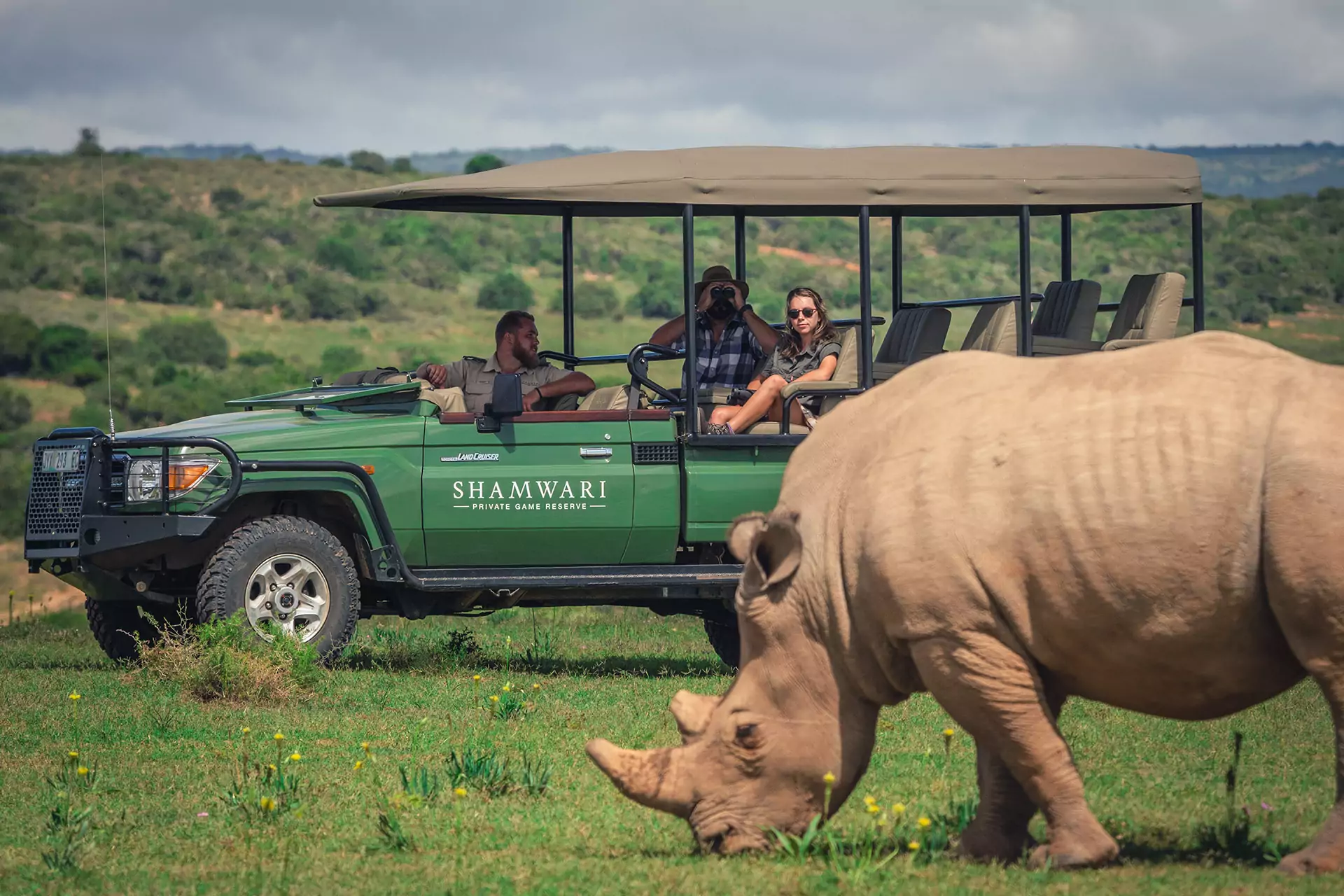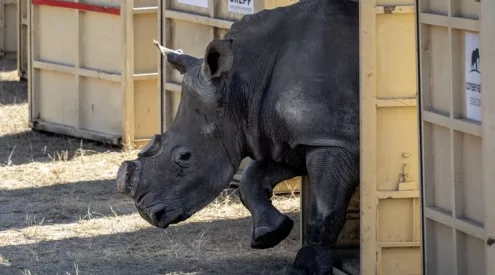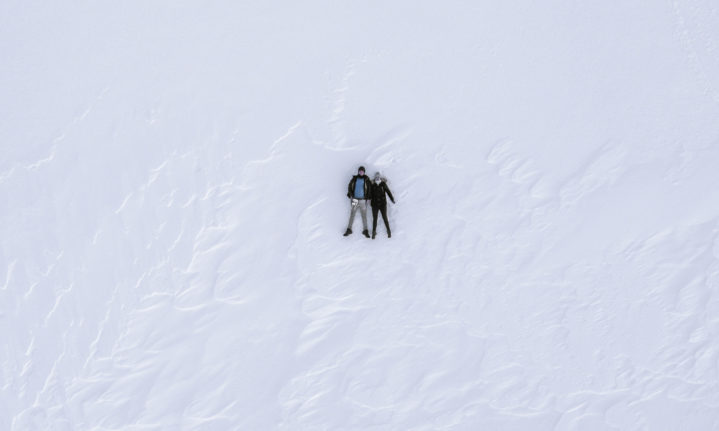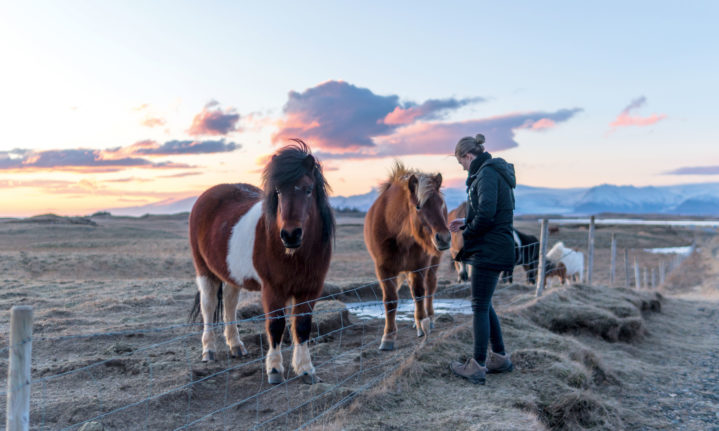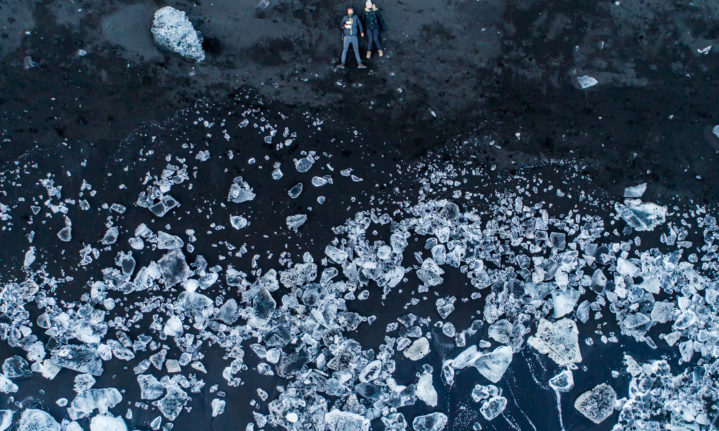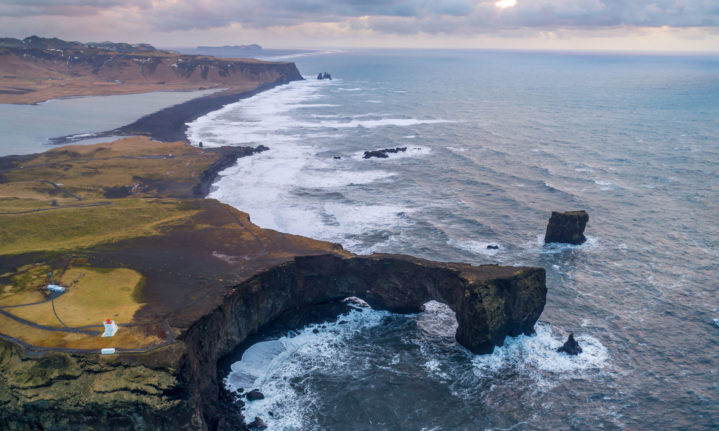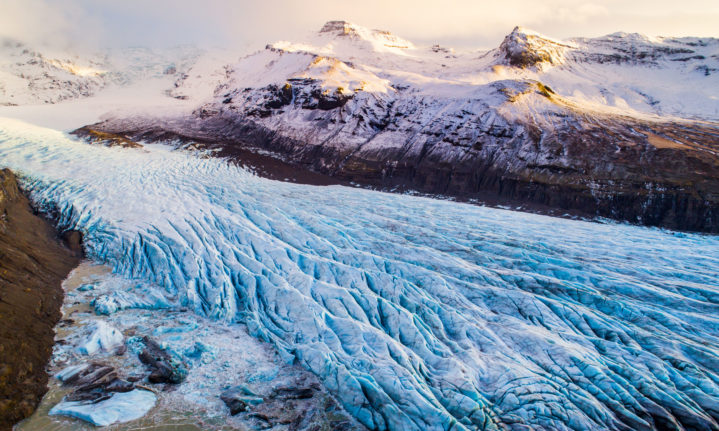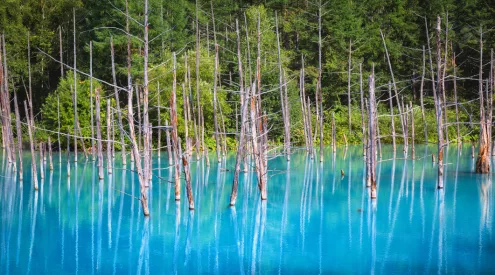Home to volcanoes and glaciers, Iceland is an unpredictable mix of adventures. Here’s why two young, intrepid Capetonians decided to navigate the island in midwinter.
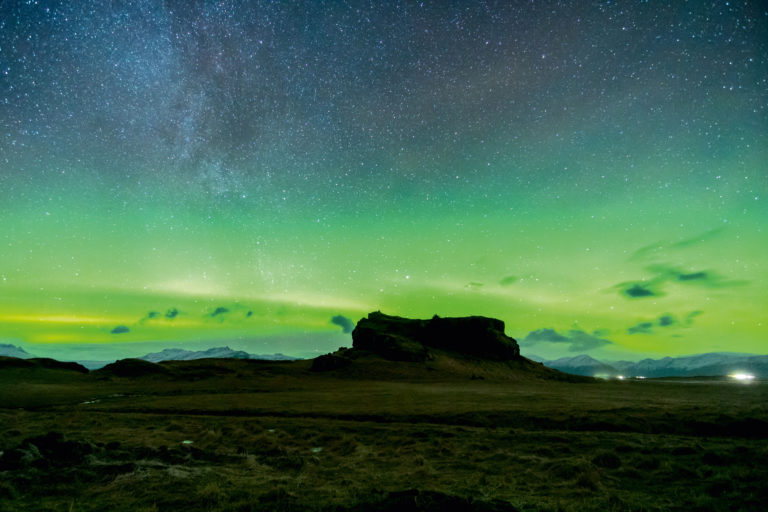
Iceland is one of the best places in the world to see the Northern Lights (here, just outside Höfn on the southeast coast). They’re visible between September and March and are most likely to appear on clear, minimally moonlit nights. Image credit: Luke Bell
I typed into my phone. I was bombarding my best friend with a stream of WhatsApp messages as the infamous Icelandic wind tried its best to remove the roof from our hostel.
‘There’s a really big storm and we’re waiting for it to pass,’ I said. ‘It’s actually pretty scary!’
My partner, Luke Bell, and I had only been in Iceland for about six hours and I was ready to leave. As a born-and-bred Capetonian, I thought I knew wind, but the Peninsula’s southeaster seemed tame compared to a 125-kilometre-per-hour Icelandic gale. This wind was angry.
In hindsight, the 15-minutes of roller-coaster turbulence as we were coming in to land in Reykjavik, and the car-rental guy warning us that they didn’t cover the cost of a car door getting blown off, should have been warning enough. Lying in my hostel bed that night, I cursed myself for having thought it would be a great idea to visit this icy island in the middle of winter.
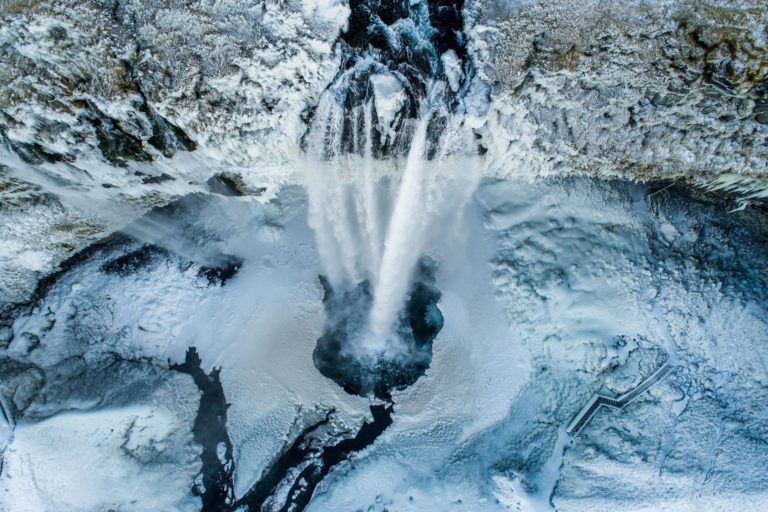
In summer it’s possible to walk into the cave opening behind Seljalandsfoss waterfall and look out onto the landscape. Image credit: Luke Bell
At breakfast the next morning, the receptionist assured us that this was ‘very unusual weather, even for Iceland’. I wasn’t convinced. Although the wind had calmed down, I could still hear its tantrum. Only when we headed out of Reykjavik and met our first herd of Icelandic horses was I reminded why we chose to visit. Open countryside stretched out in front of us – the grasslands were speckled with crunchy ice and snow-capped mountains were the backdrop. A grumpy sky was reflected in enormous puddles and although the wind still seemed determined to chase us away, the landscape was so enthralling I hardly noticed it.
Soon after starting to plan our journey, we knew we wanted to do a road trip. Although some tourists opt for guided tours, we wanted the freedom of having our own car and the chance to engage with the landscape at our own pace.
There is a road that circles the whole island, aptly named the Ring Road. Many travellers simply drive this route, starting and ending in Reykjavik. Because we were cold-weather rookies visiting in midwinter, we decided not to venture to the north of Iceland, as it’s notoriously difficult to navigate in the snowy months. Instead, we chose to wind our way around the south.

Icelandic horses are said to have arrived with the Vikings many centuries ago. Image credit: Luke Bell
With a population of about 350 000 – many of whom live in Reykjavik and its surrounds – the country is very sparsely inhabited. I think we met more indigenous horses than people. Soon after setting off, we realised that Icelandic scenery changes almost as quickly as the weather. Snowscapes morphed into lava fields, black-sand beaches into turquoise glaciers, hot springs and geysers into thundering waterfalls. Just as hail turned to rain, sun turned to snow and misty mornings to blustery blizzards. Iceland is nothing if not unpredictable.
This varied geography is exactly what drew us to this unique destination. We planned our route by choosing the attractions that we most wanted to visit, located them on the map, and then connected the dots. Iceland is busiest in summer when the days are long, the weather is mild and the scenery is lush and green. Visiting in winter meant that there were few tourists, a crisp snowy landscape and the possibility of seeing the Northern Lights.
We started by snaking our way up the southwest coast, heading for Kirkjufell mountain. Staring at the peak and ocean from above an icy waterfall, my concerns from the previous night seemed overly dramatic and rather silly. Although the wind was still howling, it no longer seemed forbidding. Even the sky had somehow been transformed from glowering to awe-inspiring. I was looking at a landscape that I’d seen dozens of times on my Instagram feed, but witnessing it in the flesh was surreal.
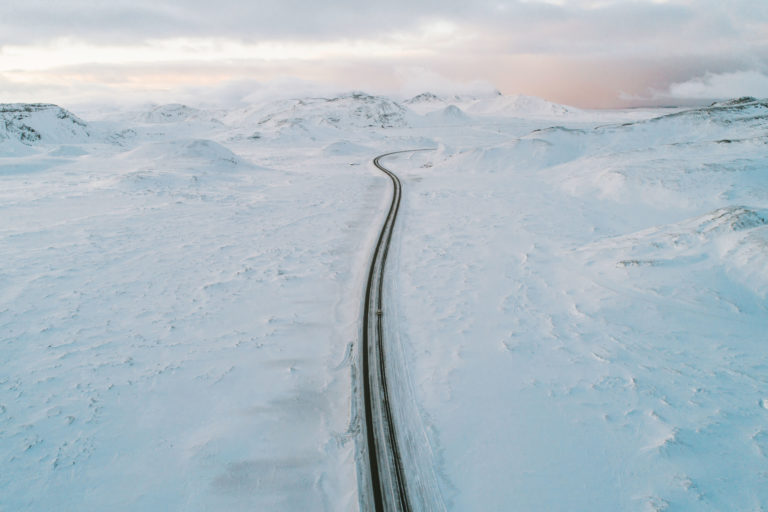
Driving on the right-hand side of narrow (and icy) roads took some getting used to. Image credit: Luke Bell
After experiencing the Christmas-card-like setting of the small town of Grundarfjörður, we headed inland to see Gullfoss and Geysir – attractions on the Golden Circle route. The wind soon chased us away from Gullfoss – one of Iceland’s best-known waterfalls, which is in the canyon of the Hvítá river – but seemed okay with us hanging around Geysir, where we saw the Strokkur hot spring erupt some 20 metres into the air. Although accompanied by the smell of rotten eggs, thanks to the high sulphur content of the water, this geothermal area was mesmerising.
The next few days were spent driving, listening to audiobooks, revelling in pink sunsets, snacking on Pringles and chocolate cookies and making friends with horses, all the while chaperoned by the moody Icelandic wind. We visited several more waterfalls, the best of which were Skógafoss and Seljalandsfoss, Iceland’s own ‘Hole in the Wall’– Dyrhólaey, Vestrahorn mountain and Fjaðrárgljúfur canyon.

Iceland has more than 100 volcanoes. Its volcanic activity results in the black-sand beaches dotted around its coast, including mesmerising Diamond Beach. This is Luke and me reclining with his drone high above us. Image credit: Luke Bell
Few sites came close to the beauty we saw at Diamond Beach and its adjacent lagoon. Black sands contrasted with shards, cubes, bricks and boulders of glistening ice – an otherworldly sight. The ice gets washed onto the beach from nearby Jökulsárlón glacial lagoon, creating the effect of glitter on velvet … or twinkling stars on a black night.
Vatnajökull glacier – the biggest in Iceland and one of the largest in Europe – was another highlight. Backed by snowy peaks and with a frozen lake below it, Vatnajökull is covered in large rifts. In fact, the pale-blue ice block looked like a spray-painted mountain. I’d never understood the true meaning of ‘ice blue’ until I saw this glacier – it was the colour of bubble-gum ice cream. Visitors can go on guided tours, hikes and ice-cave adventures – all of which are highly rated – but we opted to admire it from afar (largely to save cash as glacier tours aren’t cheap!).

Don’t visit Dyrhólaey without your binocs! This peninsula is home to a wide variety of birds and is a popular nesting sight for puffins during the summer months. Image credit: Luke Bell
As soon as the sun set each day, Luke began his Northern Lights predictions. With the help of six apps and three websites, we managed to see them – twice. The first sighting involved a 3.30am wake-up call and a three-and-a-half-hour drive … only to eventually see them at 7am a mere five minutes from our hostel: faint ribbons of pale-green light frolicking in the sky like giant Christmas lights.
The second sighting involved a later start and a much shorter chase. As the first, faint strip of light appeared, we stumbled out of our car into the dark, as the wide rainbow of greeny-blue got brighter and brighter. We snapped away and then allowed ourselves to just stare up at the sky. We were completely in awe of the neon watercolour unfurling before us.
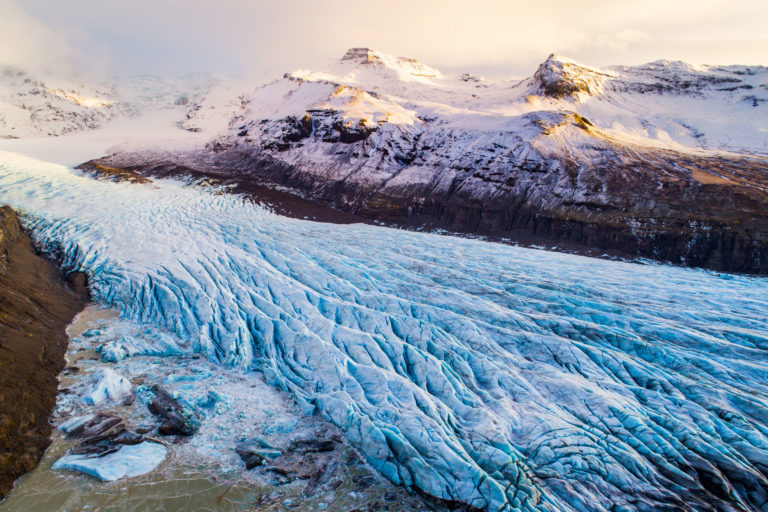
Magnificent Vatnajökull glacier spans 8 100 square-kilometres, taking up about eight per cent of Iceland. Hiding under its icy surface are volcanoes and glittering ice caves. Image credit: Luke Bell
On the last day, we headed to the Secret Lagoon – Iceland’s oldest swimming pool. Donning my bathing costume and stepping out into -12˚C weather was somewhat bizarre, but the water was 40˚C with clouds of steam billowing above it. The tip of my wet ponytail froze solid as I lolled about in the water, peering at the boiling geothermal pools and adjacent exploding geyser.
In my dreamy state, I noticed that something felt different. The wind had dropped. I don’t know whether it had finally decided to welcome us, or whether it was simply exhausted, but it didn’t matter. Wind or no wind, we had been entranced by this icy island.
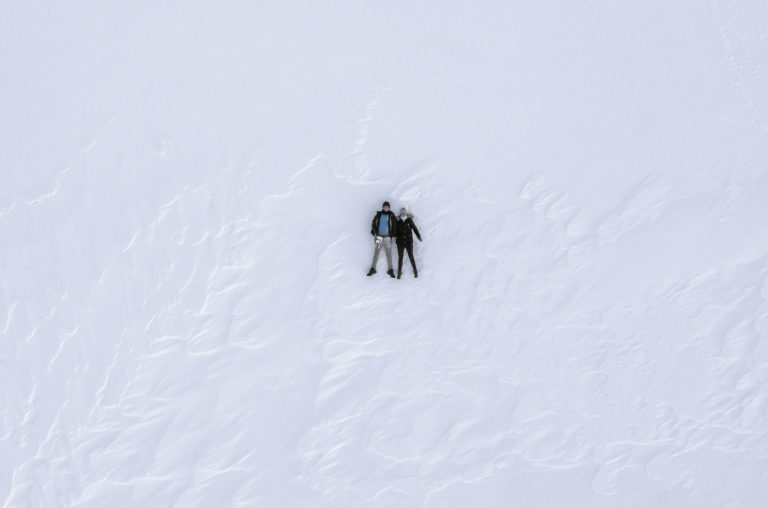
In these temperatures, layering is the way to dress – we lived in hats, scarves, gloves, thermals and boots. Image credit: Luke Bell
Text: Alexandra Findlay
Photos: Luke Bell

